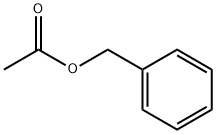Citronellyl acetate
- CAS NO.:150-84-5
- Empirical Formula: C12H22O2
- Molecular Weight: 198.3
- MDL number: MFCD00015039
- EINECS: 205-775-0
- SAFETY DATA SHEET (SDS)
- Update Date: 2025-01-27 09:38:02

What is Citronellyl acetate?
Chemical properties
clear colourless liquid
Chemical properties
Citronellyl Acetate occurs in many essential oils either as one of its optical isomers or as the racemate. The odor of racemic citronellyl acetate differs little from that of the optical isomers. Racemic citronellyl acetate is a liquid with a fresh, fruity rose odor. It is often used as a fragrance, for example, for rose, lavender, and geranium notes as well as for eau de cologne with citrus nuances. Since it is relatively stable to alkali, it can be used in soaps and detergents. Citrus flavors acquire specific character through the addition of citronellyl acetate; it is also used to round off other fruit flavors.
Chemical properties
Citronellyl acetate has a fresh, fruity odor reminiscent of rose and a pungent taste at the beginning, turning to sweet, apricot-like taste afterward.
Occurrence
Reported in the oil of citronella, Chamaecyparis lawsoniana Parl, orange juice, lemon juice, lemon and grapefruit peel oil, swangi (Citrus hystrix D.C.), ginger, tarragon, myrtle leaf, nutmeg, Cympogon citralis oil and beer.
The Uses of Citronellyl acetate
Citronellyl acetate is used as a reactant, and oxidized by ruthenium tetroxide catalyst in presence of acetonitrile.
The Uses of Citronellyl acetate
Perfumery, flavoring.
Definition
ChEBI: A monoterpenoid that is the acetate ester of citronellol. It has been isolated from Citrus hystrix.
Preparation
Citronellyl acetate is synthesized By esterification of citronellol with acetic acid or acetic anhydride.
Aroma threshold values
Detection: 1 ppm
Taste threshold values
Taste characteristics at 30 ppm: floral, green, fruity, sweet, citrus and waxy character.
Flammability and Explosibility
Non flammable
Safety Profile
Mildly toxic by ingestion. A human skin irritant. See also ESTERS. Combustible liquid. When heated to decomposition it emits acrid smoke and irritating fumes.
Synthesis
By direct acetylation of citronellol (natural or synthetic); its physical–chemical characteristics vary, depending on the quality of the starting alcohol.
Properties of Citronellyl acetate
| Melting point: | 17.88°C (estimate) |
| Boiling point: | 240 °C(lit.) |
| Density | 0.891 g/mL at 25 °C(lit.) |
| vapor pressure | 1.97Pa at 20℃ |
| FEMA | 2311 | CITRONELLYL ACETATE |
| refractive index | n |
| Flash point: | 218 °F |
| storage temp. | Sealed in dry,Room Temperature |
| solubility | DMSO : 100 mg/mL (504.29 mM; Need ultrasonic) |
| form | neat |
| form | Liquid |
| color | Colorless liquid |
| Odor | fruity odor |
| Water Solubility | PRACTICALLY INSOLUBLE |
| JECFA Number | 57 |
| CAS DataBase Reference | 150-84-5(CAS DataBase Reference) |
| NIST Chemistry Reference | Citronellyl acetate(150-84-5) |
| EPA Substance Registry System | Citronellol acetate (150-84-5) |
Safety information for Citronellyl acetate
| Signal word | Danger |
| Pictogram(s) |
 Exclamation Mark Irritant GHS07 |
| GHS Hazard Statements |
H315:Skin corrosion/irritation H319:Serious eye damage/eye irritation H335:Specific target organ toxicity, single exposure;Respiratory tract irritation |
| Precautionary Statement Codes |
P261:Avoid breathing dust/fume/gas/mist/vapours/spray. P304+P340:IF INHALED: Remove victim to fresh air and Keep at rest in a position comfortable for breathing. P305+P351+P338:IF IN EYES: Rinse cautiously with water for several minutes. Remove contact lenses, if present and easy to do. Continuerinsing. P405:Store locked up. |
Computed Descriptors for Citronellyl acetate
Citronellyl acetate manufacturer
New Products
Methyl (R)-1-Boc-4,4-difluoropyrrolidine-2-carboxylate 2,2-Difluoropropylamine hydrochloride tert-butyl 3-bromoazetidine-1-carboxylate (R)-1-Boc-3-hydroxypyrrolidine DIFLUOROACETIC ANHYDRIDE 2,2-Difluoropropionic acid Diallylamine, 99% Calcium hydroxide, 95% Aluminum oxide, basic 2-Bromophenylacetonitrile, 97% L-tert-Leucine,97% N-Hydroxy-2-methylpropanimidamide 4-(3,4-Dichlorophenyl)-3,4-Dihydro-N-Methyl-1-(2H)-Naphthalenimine (Schiff Base) 2-AMINO-3,5-DIBROMO BENZALDEHYDE [ADBA] L-Glutamic Acid Dimethyl Ester Hcl 10-Methoxy-5H-dibenz[b,f]azepine 5-Cyanophthalide N, N-Carbonyldiimidazole (CDI) Dibenzoyl Peroxide Titanium Dioxide 2-(Methylthio) Benzonitrile Sodium Acetate Anhydrous Allopurinol 1,5-DibromopentaneRelated products of tetrahydrofuran








You may like
-
 Citronellyl acetate 99%View Details
Citronellyl acetate 99%View Details -
 Citronellyl acetate 98%View Details
Citronellyl acetate 98%View Details
150-84-5 -
 Citronellyl acetate CAS 150-84-5View Details
Citronellyl acetate CAS 150-84-5View Details
150-84-5 -
 Citronellol acetate CAS 150-84-5View Details
Citronellol acetate CAS 150-84-5View Details
150-84-5 -
 Citronellyl acetate 150-84-5 98%View Details
Citronellyl acetate 150-84-5 98%View Details
150-84-5 -
 Citronellyl acetate 98%View Details
Citronellyl acetate 98%View Details
150-84-5 -
 Citronellyl Acetate CAS 150-84-5View Details
Citronellyl Acetate CAS 150-84-5View Details
150-84-5 -
 Citronellyl acetate CAS 150-84-5View Details
Citronellyl acetate CAS 150-84-5View Details
150-84-5
